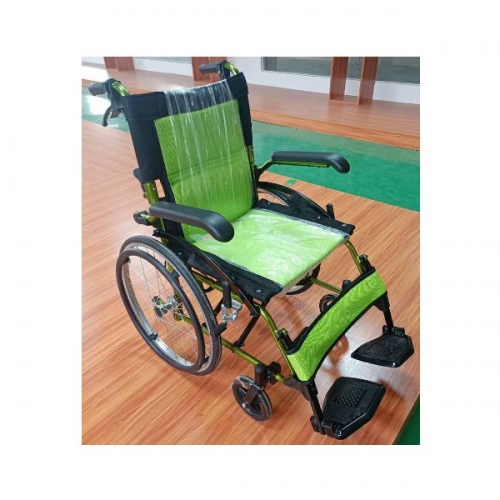When choosing wheelchair, the most important factor to consider is the size of wheelchair. The main weight-bearing parts of wheelchair riders were around hip sciatic tubercle, femur, fossa and scapula. Wheelchair size, especially the seat width, depth and backrest height, and pedal to cushion distance is appropriate, will affect the passenger's blood circulation of the relevant focus, and skin friction, even pressure sores. In addition, the safety, operation ability, weight of wheelchair, place of use and appearance of patients should also be considered.

1. Seat Width: Measure the distance between the buttocks or thighs when sitting down. After sitting down for 5 cm, there are 2.5 cm gaps on each side. The seats are too narrow, the upper and lower wheelchairs are difficult to compress the buttocks and thigh tissues; the seats are too wide, it is not easy to sit steady, it is inconvenient to control the wheelchair, the limbs are easy to fatigue, and it is difficult to enter and exit the door.
2. Seat Length: Measure the horizontal distance between the hind buttock and calf gastrocnemius when sitting down, and reduce the measurement result by 6.5 cm. If the seat is too short, the weight will mainly fall on the sitting bone, which will easily cause local excessive pressure; if the seat is too long, it will compress the popliteal fossa and affect the local blood circulation, and easily stimulate the skin of the part. Short seats are better for patients with short thighs or flexion contracture of hip and knee.
3. Seat Height: Measure the distance from heel (or heel) to popliteal fossa when sitting down, and add 4 cm. When the pedal is placed, the board surface is at least 5 cm off the ground. If the seat is too high, the wheelchair can not enter the table; if the seat is too low, the sitting bones will bear too much weight.
4. Cushion: In order to comfort and prevent bedsores, wheelchair chairs should be placed on the cushion. The usual cushions are foam rubber pads (5~10cm thick) or gel pads. A plywood 0.6cm thick can be placed under the cushion to prevent the seat from sinking.
5. * Back height: * The higher the back, the more stable it is, * the lower the back, the greater the activity of the upper body and upper limbs. Low back: Measure the distance from the sitting surface to the armpit (one or two arms extending forward flat), and reduce the result by 10 cm. High back: Measure the actual height from the seat to the shoulder or back pillow.
6. Armrest Height: When sitting down, the upper arm is vertical and the forearm is flat on the arm. Measure the height from the chair surface to the lower edge of the forearm, add 2.5 cm. Appropriate arm height helps to maintain correct body posture and balance, and allows upper limbs to be placed in a comfortable position. The armrest is too high, the upper arm is forced to rise, susceptible to fatigue. If the handrail is too low, it needs to lean forward to maintain balance. It is not only easy to fatigue, but also can affect breathing.
7. Other wheelchair accessories: designed to meet the needs of special patients, such as increasing the friction surface of the handle, extending the car box, shock-proof device, arm bracket installation, or wheelchair table for patients to eat and write.
8. Check weight: Because your goal is to buy a lightweight wheelchair, choosing a lightweight wheelchair is the first requirement. A lighter wheelchair is obviously a better choice. Not only is it easy to carry, but it's also easier to use. This means that it will be easier to operate. Relatively speaking, lighter wheelchairs are more expensive.
9. Check materials: When looking for a lightweight wheelchair, you should check the materials used in the wheelchair and the durability of the materials. More importantly, the weight of the material. The more common material is stainless steel. However, the problem with stainless steel is that it can be heavy. So the recommended material is aluminium, although the price of such material will be higher.
10. Quality of tyres: You should also look at the quality of tyres on wheelchairs. Wheels must be suitable for all types of surfaces so that they can be used in different places. Make sure it never flattens.
11. Attention to comfort: Lightweight wheelchairs with different characteristics need to be checked. Avoid discomfort caused by prolonged wheelchair sitting. It is important to ensure that the height and width of the seat are suitable for the user. It should also have cushioning material. Handrails are also essential. It not only makes the sitting person feel comfortable, but also facilitates the wheelchair pusher.













